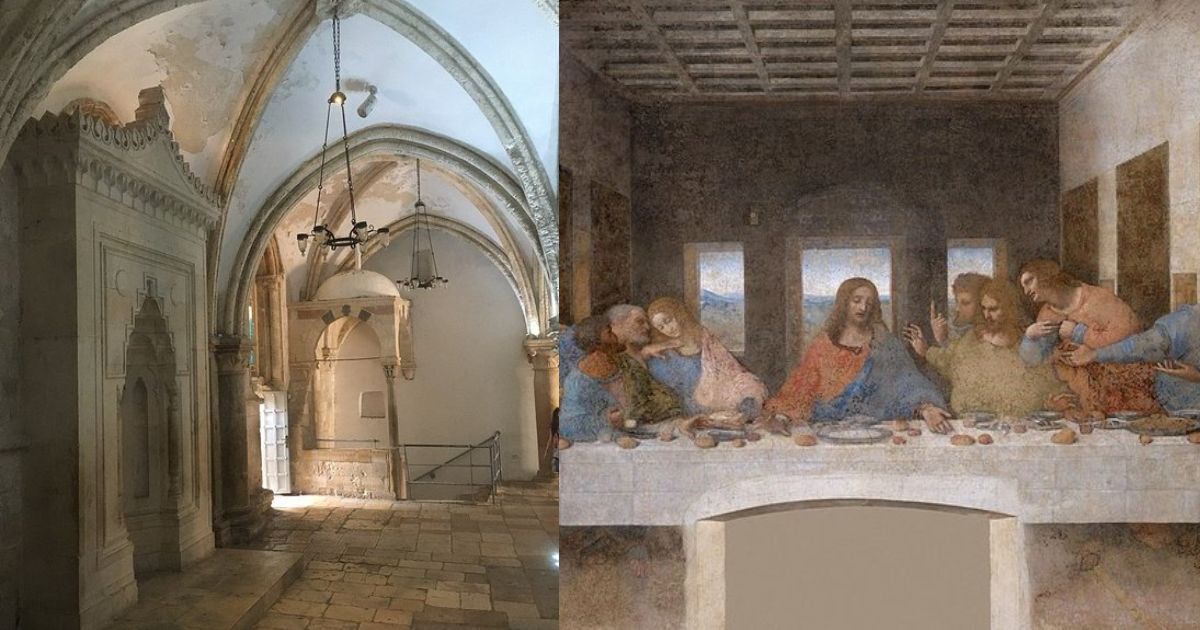The house where Jesus’ Last Supper may have been held is still intact in Jerusalem 2,000 years later, according to experts. Remarkably preserved after two millennia, they propose that this biblical event occurred in the ‘Upper Room’ of a two-story limestone house with a red sloping roof.
Luke 22:11–13 mentions the chamber in passing when Jesus Christ requests a spacious, well-furnished upper room so that his disciples can enjoy the Passover supper. According to the Bible, Jesus told his twelve apostles at the Last Supper in 33 AD that one of them would betray him, naming Judas Iscariot as the traitor.
Additionally, he informed his disciples that he was going to die soon, and shortly after that, the Romans had him imprisoned and crucified. The Daily Mail claims that this area is documented in a number of artworks that date at least to the fourth century AD.
Around this time, Christians started going to the room to remember the last moments of Christ’s freedom prior to his crucifixion. The Upper Room still receives thousands of visits annually.
According to the story, Jesus blessed the bread and wine, stating that they represented his broken body and the blood he would spill to atone for sins. According to the Mirror US, the sacrament of the Eucharist is still used to symbolically reference this event in Christian rituals today.
REVEALED: Medieval inscriptions found at site where Jesus, Apostles held the Last Supper in Jerusalem
The Upper Roomhttps://t.co/pAo1s0MJve
— Jack Poso 🇺🇸 (@JackPosobiec) April 20, 2025
Originally a prayer space big enough to hold more than 120 people, the Upper Room is thought by archaeologists to be the location of the Last Supper, also called the Cenacle. In Luke 22:11–13, Jesus makes a passing reference to this place when he requests a large, well-furnished upper room for him and his disciples to eat their Passover feast.
This two-story building is located above the southern entrance on Mount Zion in the old city of Jerusalem. It was constructed with wide, branching columns supporting a sloping red roof that can still be seen today and a vaulted ceiling. However, whether the building existed during Jesus’ time cannot be established because archeological investigations cannot be conducted at the site.
In 1884, Greek Orthodox Christians discovered what is believed to be the oldest map of Jerusalem, which dates to 560 AD, while building a new church in Madaba, Jordan. The Cardo Maximus (main street) and two holy buildings at the southern end, which are distinguished by their red roofs, were featured on the map, which was intended to represent the Holy Land.
According to archaeologists, the house where the Last Supper may have taken place is still standing in Jerusalem, 2,000 years later. https://t.co/Dot5HL7wgZ pic.twitter.com/Y14fmjX8fC
— Irish Star US (@IrishStarUS) May 29, 2025
David Christian Clausen, an adjunct professor of Religious Studies at the University of North Carolina, didn’t notice anything out of the ordinary until 2017. A building in the exact same location as the Cenacle caught his eye; it had the same crimson, sloping roof.
As their interest was piqued, researchers recognized that additional proof was required to validate the place as the scene of the Last Supper. In 1846, a sixth-century picture discovered in Italy showed Jesus riding a donkey through the city’s southern gate, with the Cenacle visible in the background.
Zechariah prophesied the ‘Second coming of Jesus Christ’ and the resurrection of the dead, and the Gospel of Matthew echoes this event by describing Jesus’ arrival into Jerusalem. The narrative continues: “Tell the city of Zion, Look, your king is coming to you! He is humble and rides on a donkey and on a colt, the foal of a donkey.”













